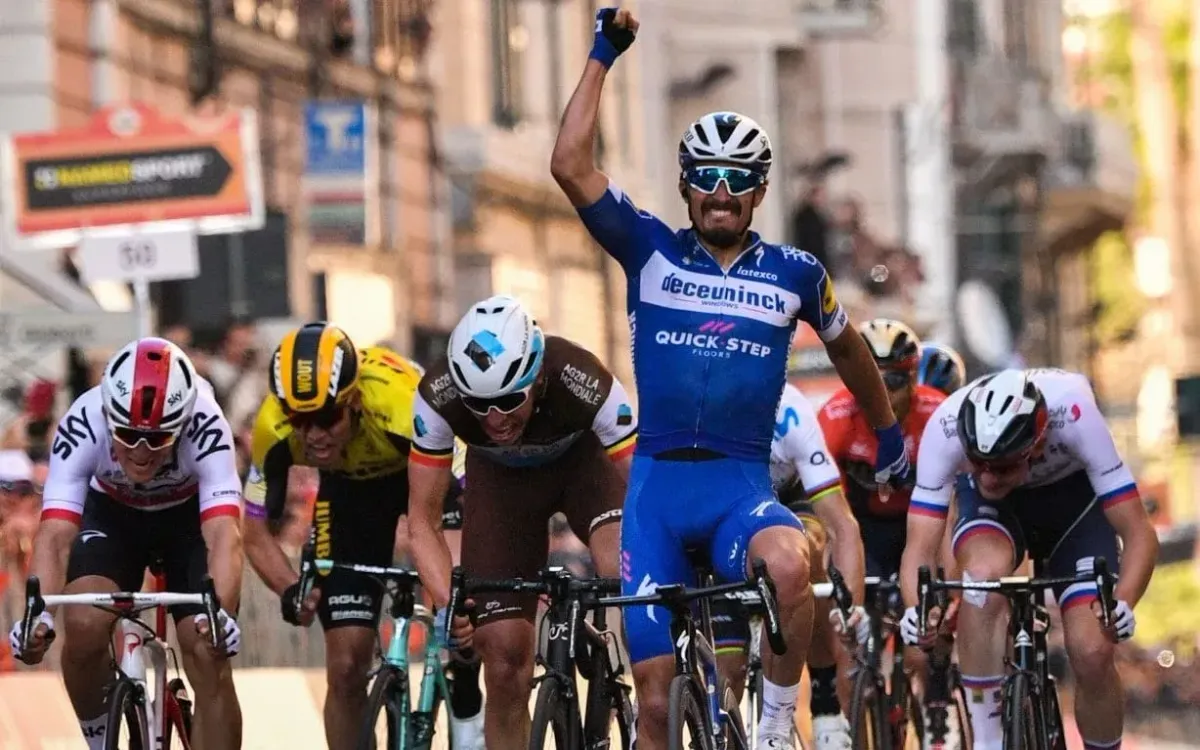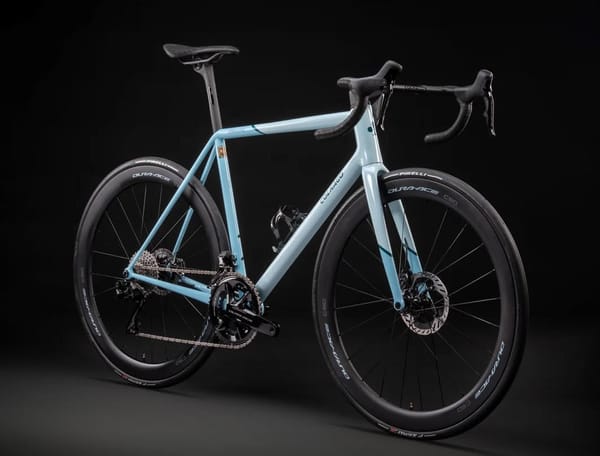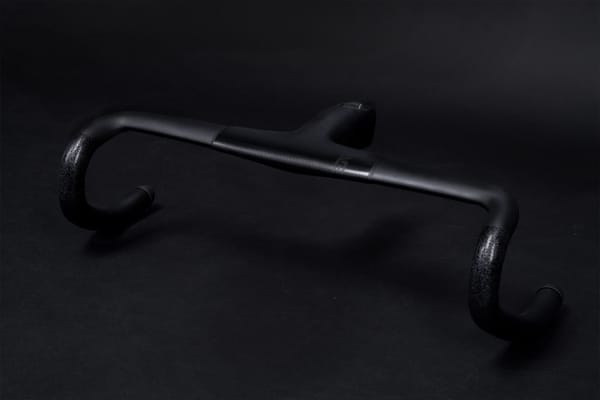2019 Milan-San Remo Recap

The first of the five 2019 Monuments took place in Italy on Saturday at Milan – San Remo.
The “sprinters’ classic” saw Vincenzo Nibali (Bahrain – Merida) escape on the Poggio and ride solo to the finish last year, avoiding a sprint.
The big question for 2019, would the race end in a sprint once again? Or would another rider take a solo victory? And would that rider, in either circumstance, be Peter Sagan who has yet to win La Primavera?
The Breakaway
Ten riders went into the breakaway, four riders of the American Novo Nordisk team: Joonas Henttala, Andrea Peron, Charles Planet and Umberto Poli. The Novo Nordisk lead group was accompanied by six others: Fausto Masnada (Androni Giocatolli РSidermec), Mirco Maestri (Bardiani РCSF), Alessandro Tonelli (Bardiani РCSF), Guy Sagiv (Israel Cycling Academy), Luca Raggio (Nero Sottolli РSelle Italia РKTM) and Sebastian Sch̦nberger (Nero Sottolli РSelle Italia РKTM).
On the climb of the Cipressa (about 239km into the race), Masnada was the last surviving member of the breakaway to be caught by the peloton.
Daredevil Descent
Niccolò Bonifazio (Direct Energi) went into full daredevil mode on the descent of the Cipressa.
Nobody tried to follow which put Bonifazio up to the impossible task of keeping a chasing peloton off his wheel. He eventually got caught in the lead up to the Poggio, but it was great entertainment nonetheless.
Don't try this at home 😱 #MilanoSanremo #NamedSport pic.twitter.com/sG3koewm0e
— Milano Sanremo (@Milano_Sanremo) March 23, 2019
The Poggio di Sanremo
The climactic climb of the day started with Deceuninck – Quick-Step riders Philippe Gilbert and Zdenek Stybar creating a high pace at the start of the climb of the Poggio.
As soon as Stybar looked over his shoulder and dropped the pace just a bit, EF Education First Pro Cycling Team rider Alberto Bettiol attacked. He created a nice gap, but Strade Bianche winner Julian Alaphilippe (Deceuninck-Quick-Step) counterattacked. The Frenchman closed the gap and immediately returned the favor.
Peter Sagan, Polish national champion Michal Kwiatkowski (Team Sky), World Champion Alejandro Valverde (Movistar Team), European Champion Matteo Trentin (Mitchelton-Scott) and Belgian riders Oliver Naesen (AG2R La Mondiale) and Wout Van Aert (Jumbo-Visma) then reeled in Alaphilippe before the top of the Poggio.
During the descent, 2017 Giro d’Italia winner Tom Dumoulin (Team Sunweb) bridged the gap and joined the lead group with 3.5km to go to the finish. Three more riders made the connection at the end of the descent: last year’s winner Nibali (Bahrain Merida), Slovenian national champion Matej Mohoric (Bahrain Merida) and Australian rider Simon Clarke (EF Education First Pro Cycling Team).
With just over 2 kilometers of flat pavement to go, the race was lined up for a sprinters finish.
The Last 2 Kilometers
Trentin attacked with 2 km left. Trentin earned a small gap while Sagan kept the pace high to keep Trentin within striking distance. Van Aert put in a lot of work to bring the gap back down and eleven leaders entered the last kilometer.
Mohoric launched an early attack, but Alaphilippe covered his wheel quickly. The pace dropped and the whole group started to take measure of one another.
With a sprint finish in the cards, it was looking like Sagan might finally win the Primavera.
Mohoric started the sprint. Alaphilippe grabbed his wheel and Naesen and Kwiatkowski hitched up behind him. In that order they passed Mohoric.
With Alaphillippe in the lead, Naesen and Kwiatkowsi tried to swing around the small, 62kg Frenchman but neither succeeded.
After his recent win at Strade Bianche, Alaphilippe won the Milan-San Remo.
The last breath-taking km where you need to go all-in! This is #MilanoSanremo presented by @NamedSport | L'ultimo km. Lì dove devi andare all-in! Questa è la #MilanoSanremo presented by #NamedSport pic.twitter.com/PV1YMURo6Y
— Milano Sanremo (@Milano_Sanremo) March 23, 2019
Kwiatkowski finished third and Sagan fourth. Belgian rider Naesen took second.
Full results are available here.
Strava Stats Show What it Took to Compete at Milan-San Remo
Thanks to Strava and Oliver Naesen throwing up his ride, we know what it took to grab second place at Milan-San Remo.
Unlike the Tour of Flanders or Paris-Roubaix, there’s very little opportunity to really attack on the flowing roads of the opening 250km of the race. The climbs of the Cipressa and the Poggio are where the race is really decided.
The difficulty is being able to match the power of attackers on the Poggio after such a long distance. This is illustrated by Naesen’s average power over the opening miles of the race. At 100 miles into the race, Naesen had averaged 191 watts, I could hang in that group. For the final 80 miles, Naesen up that average to a whopping 275 watts.
Naesen, a much bigger rider than the likes of Valverde and Kwiatkowski, had to put out a lot of power to keep up with the lighter riders on the Poggio, averaging 501 watts on the climb.
At the finish, Naesen was able to take second place with a top speed of 58.3kmh and a max power of 1,289 watts.





